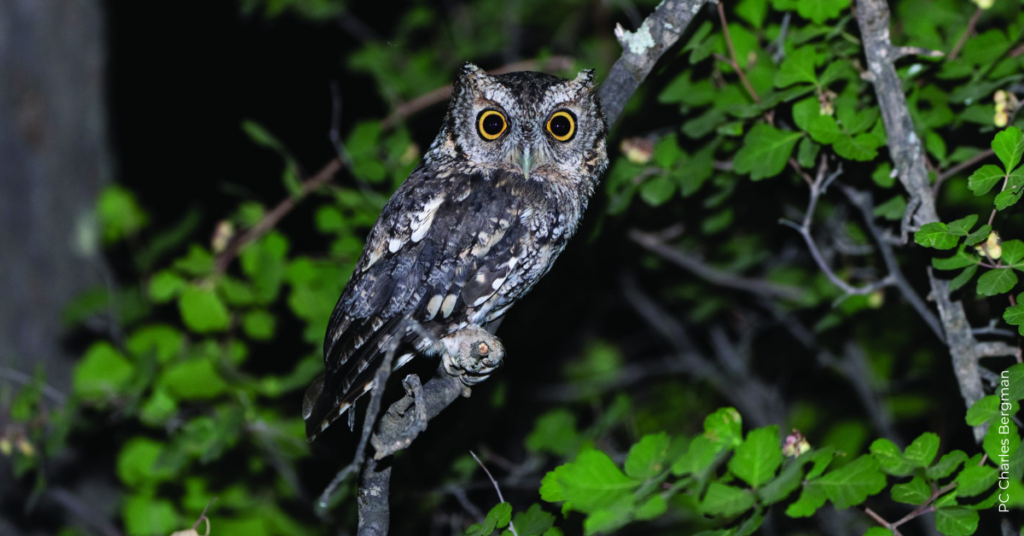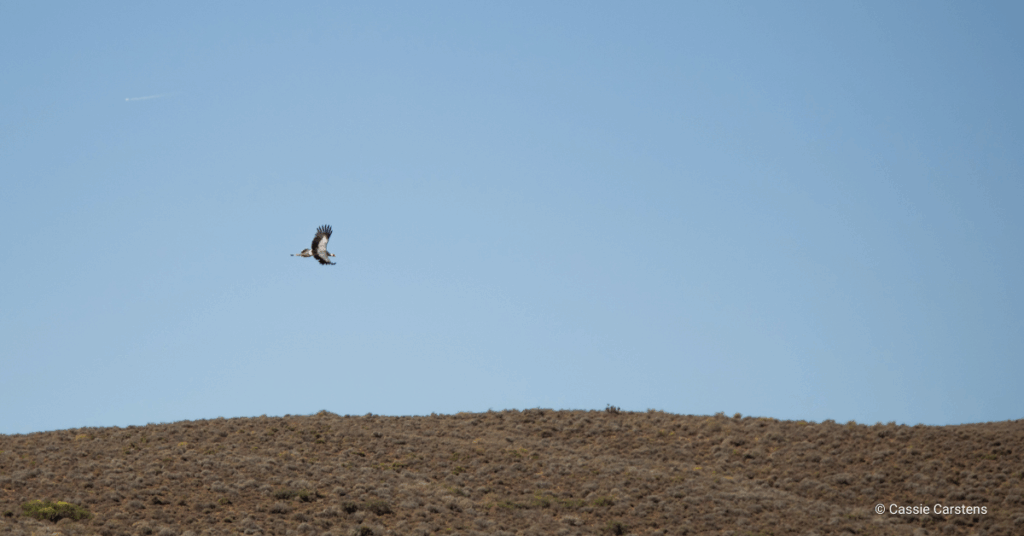How many owls have you seen in the wild? Unless you are an owl researcher, chances are the answer is relatively few. With excellent low-light vision, high-precision hearing, silent flight, and plumage that lets them virtually disappear into the environment, owls aren’t easy to find.
How many owls have you heard in the wild? I’m guessing you’ve heard far more than you’ve seen. Like many birds, owls are much more conspicuous in the auditory realm. I think people like diurnal raptors in part because they are large in size and easy to see, making them a great entry to birding in general (besides the fact that they are awesome…). Owls, especially the little ones, make you work harder and are most active when most people are inside and out of the dark. During the day, most sleep inside tree hollows or on branches where cryptic plumage and feather positioning (including their “ear” tufts) allow them to blend into their surroundings and disappear. Luckily, owl species have distinct vocalizations. Paying attention to and learning these is your best bet to discovering what owls you might share a neighborhood or forest with.
Another key to knowing whoo you might be hearing is knowing where you are and which species might be around that area. This is important for bird identification in general, but especially for these screech-owls because their ranges only overlap in a few spots (see the range maps below).
Did you know that there are 22 screech-owl species globally? They are all part of the genus Megascops, and all occur in the new world (N and S America). They used to be taxonomically lumped with the old world’s small, eared owls in the genus Otus, but genetic analyses determined that they are quite different. North America (Canada and the US) is home to three different screech-owl species: Eastern (Megascops asio), Western (Megascops kennicottii), and Whiskered (Megascops trichopsis), here are some tips to tell them apart:
Eastern Screech-owls have the broadest distribution of the three N American Screech-owls, occurring across much of the eastern and central US. They are the biggest of the three species, averaging ~5% bigger than Western Screech-owls and 38% larger than Whiskered’s. Eastern Screech-owls have 2 primary vocalizations 1) a long monotonic trill that sometimes changes pitch, and 2) a whinny. Eastern Screech-owls also have a red morph (see image below).
Western Screech-owls, as their common name suggests, occur in the western parts of the US and Mexico, mostly in and west of the Rocky Mountains in the US. They are ~ 25-30% larger than Whiskered Screech-owls and slightly smaller than Easterns. Western and Eastern Screech-owls overlap in the eastern foothills of the Rocky Mountains in Wyoming, Colorado, and Montana and also in western Texas and northeast Mexico. Where they overlap, Western can only be distinguished from Eastern by its primary vocalization, which is a series of 5-9 or 9-15 whistled hoots that start slow and speed up at the end, reminiscent of a bouncing ball. Westerns also have a double trill call that is reminiscent of the Eastern Screech-owl’s trill but occurs in two shorter bursts, with the second trill speeding up, compared to the much longer trill of the Eastern. When seen, most adult Westerns have a dark gray/black bill compared to the yellowish to light green of Eastern Screech-owls.
Whiskered Screech-owls have a range that is mostly in Mexico, ranging south to Nicaragua and north into southern Arizona and southwestern New Mexico. The least studied of these three species, Whiskered Screech-owls get their name from extended bristles on the ends of feathers on the border of its facial disk. They are quite fine and difficult to see unless the bird is in hand. Better characteristics for identification include smaller size, a yellow to olive bill, and irises that are tinged orange/red compared to the lemon yellow of both Eastern and Western. The best cues are location and voice. Whiskered Screech-owls’ primary call is a series of 5-8 or 6-12 toots, with the last 2-3 notes dropping in pitch and sounding emphasized/punctuated. Another common vocalization given by agitated birds is the ‘telegraph’ or ‘morse-code’ call, which is a series of rapid short and long notes and sounds like dots and dashes.
The Whiskered Screech-owl’s range overlaps with Western in the southwestern US and much of Mexico and with Eastern in northeastern Mexico. These are the places to rely on vocalizations most strongly. While doing so, keep in mind that all three of these species, as well as many other owls, have additional vocalizations that are all at times described as hoots, barks, squeals, and, of course, screeches. They also sound quite alike, so even seasoned owl researchers will wait to hear distinctive/diagnostic primary calls in locales where more than one species occurs!
That leaves us with 19 Central and South American Screech-owls for another time. Hope this helps you start to sort out which owls live near you!

This blog was written by Dr. Dave Oleyar, HWI’s Long-term Monitoring & Community Science Director. You can learn more about Dave here.
Audio files are from Cornell’s Macaulay Library, range maps from Fink et al.’s 2023 Ebird status and trends update through 2022.




